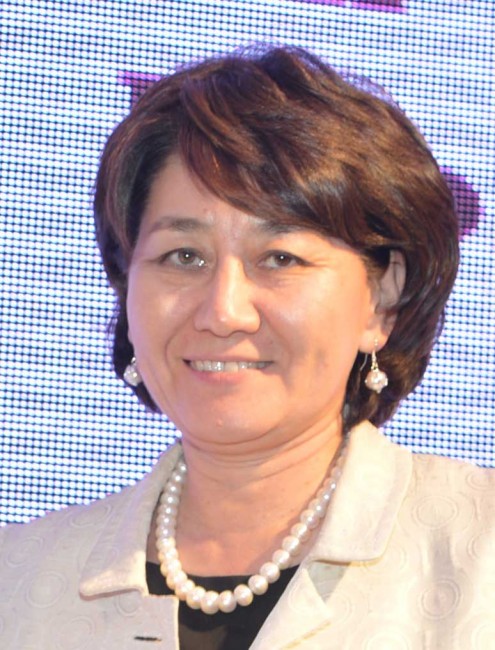InAsia
Insights and Analysis
A Conversation with Mongolia’s Environment Minister Oyun Sanjasuren
July 23, 2014


Mongolia is one of the world’s fastest growing economies, rich in natural resources. As minister of the environment, what do you see as the challenges and opportunities in managing these great resources?
For hundreds if not thousands of years, Mongolians, who lived as nomadic herders, lived in harmony with nature, and because they were directly dependent on this nature to survive they learned how to protect it, and traditionally to worship nature as well. We have a lot of good traditions that can be used for environmentally friendly development, but the last decades have produced a lot of pollution and environmental degradation. We’re lucky because we are a small population, just under three million, with a large area per capita – the least dense country in the world. We’re lucky there are still large areas that are relatively pristine, but many are subject to the negative impacts of climate change. Pollution and environmental degradation are mostly seen in the cities, especially in the capital. Half of Ulaanbaatar citizens live in ger districts, where there is no running water and no sewage. Meanwhile, outside Ulaanbaatar there are a large number of small-scale mining sites left degraded, and that’s a legacy of those last 20 years. Since 1990, when we transitioned to democracy and a market economy, there have been many challenges. The first priority was to create jobs and incomes, and the environment was overlooked. In the past six or seven years, when the economy has been growing almost continuously, the government decided that we had to turn our economic growth into something more sustainable and environmentally friendly. On the public side, we’ve seen huge support for more environmentally friendly development, because the nomadic herders are pretty much dependent on nature and when they see a lot of land degraded by mining operations there is less and less support for local mining.
We also have to realize that mining is one of our main engines of economic growth and development, whether we like it or not, so rather than trying to avoid mining we have to make mining more responsible. 15 years ago, when commodity prices were low and we were desperate to create jobs, we couldn’t afford this, but now we can afford to demand higher standards. And if your projects aren’t environmentally friendly, we can actually refuse them. Legislation was introduced a few years ago that will gradually ban mining in watershed and forest areas, and areas protected by national parks have been gradually increased. We pledged in the early 1990s that 30 percent of our territory would be turned into protected areas, and now about 17 percent is protected. On the one hand, this is good news; on the other, we have to work on better management of those protected areas.
What are the government’s plans to promote responsible mining and rehabilitation?
Rehabilitation of mining areas is still a major issue, and until 2008 Mongolia didn’t have very good rehabilitation standards. In 2008, new rehabilitation standards were introduced, and now we’re working very hard on introducing new mine-closure and discharge standards. We now have a map of most of the degraded areas that are in need of rehabilitation, which totals about 600 sites. We also introduced an environmental audit that mining companies must go through, and private environmental auditing companies will be helping those mining companies to implement and monitor their environmental action plans. The Environmental Impact Assessment Report is usually submitted to the Ministry, but with just a few staff looking after 3,000 exploration and 1,000 mining licenses, oversight has been poor. So this middle structure of private environmental audit companies will help both mining companies and the government to implement the plan.
You were part of the original group invited to participate in The Asia Foundation’s conference, America’s Role in Asia. What are your recollections as an early Asia Foundation grantee?
In 1999, I was invited along with Mr. Tsagaan to participate in a workshop in Japan on America’s Role in Asia. I had just entered politics, so I found it very interesting and enticing. Mongolia was such an isolated country until 1990, and when the world opened to us there was so much for Mongolians to learn. I also remember an early conference organized by The Asia Foundation in 2002 about economic development and solutions for growth, which featured many excellent speakers. Just preparing and researching for that workshop enlightened me about Mongolia’s development path. I also remember fondly a visit to the Foundation’s San Francisco headquarters in 2003 as an Eisenhower Fellow.
The Asia Foundation is launching a new initiative to identify young Mongolian leaders. What aspects should we consider when moving forward with this new program?
Preparing the new generation of leaders is very important. I benefited from the Eisenhower Fellowship and the Global Leaders of Tomorrow program, which give such a great opportunity to learn new ways of thinking. Our Zorig Foundation has been running a leadership program for about ten years, and we also started a young environmental leadership program that is now in its third year. Later this year we are going to be doing a program for rural youth in 21 aimags. Young people very much appreciate and benefit from these kinds of programs.
As a long-standing Member of Parliament, you’ve been at the forefront of the fight against corruption. What progress has been made?
Good governance and fighting corruption were not priorities when I entered Parliament in 1998. A draft anti-corruption bill was submitted at the end of 1999, and I was one of the co-signers, but because there was no political will it sat in the Parliament until 2004. After a new coalition government was created, anti-corruption legislation was passed in 2006 and an agency was established in 2007. The provision of the Law on Anti-corruption relating to income declarations by high-level officials came into effect in 2007, the right to information law was passed a few years ago, and conflict of interest legislation was passed last year. Legally we have progressed quite a bit since around 2005-2006, which is good news, but fighting corruption is very difficult, and success doesn’t come overnight.
About our blog, InAsia
InAsia is posted and distributed every other Wednesday evening, Pacific Time. If you have any questions, please send an email to [email protected].
Contact
For questions about InAsia, or for our cross-post and re-use policy, please send an email to [email protected].The Asia Foundation
465 California St., 9th Floor
San Francisco, CA 94104
The Latest Across Asia
Program Snapshot
April 18, 2024
News
April 17, 2024

2024 Lotus Leadership Awards
Thursday, April 25, 2024, New York City
The Lotus Leadership Awards recognize contributions towards gender equality in Asia and the Pacific







0 Comments